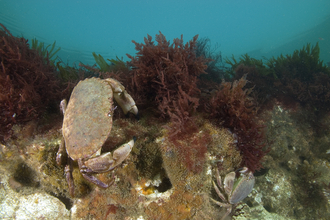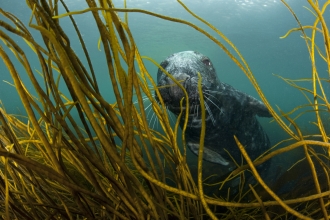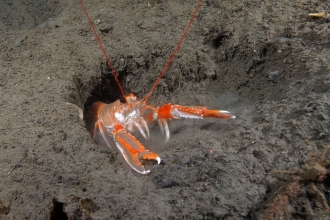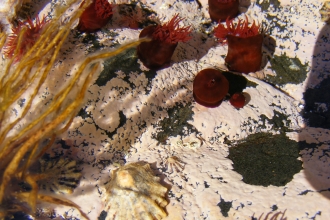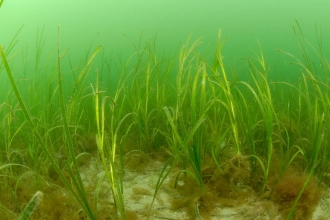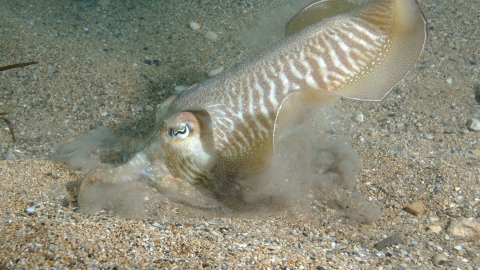
Cuttlefish digging for sand eels ©Paul Naylor www.marinephoto.co.uk
Sand and gravel
What is it?
Sand and gravel are terms given to small pieces of sediment found on the seabed. Particles ranging in size from 0.0625mm to 2mm are classed as sand, whilst gravel ranges from 2mm to 64mm.
Sand and gravel can be found covering the seabed from the depths of the ocean to the top of shore; in fact, together they cover up to 90% of our seabeds. They usually occur as a mix of both sand and gravel, one rarely appearing without the other.
Why is it like this?
Sand and gravel are formed by erosion. As the constant movement of water wears away cliffs and rocky reefs, the rock is broken down into smaller and smaller particles (sand and gravel). Because of their small size, these particles are easily carried away and dispersed by the movement of tides and currents.
Distribution in the UK
This type of seabed can be found off the coast throughout the UK. On the west coast, in the English Channel and the Irish Sea, sand and gravel is mostly shell derived, while around the North Sea it is more often formed from hard rocks.
What to look for
Sandy seabeds are popular with burrowing creatures, like lugworms and sand mason worms, which sculpt towers from sand grains and shell fragments. At low tide these towers can often be found on beaches, rising from the sand like a city of miniature skyscrapers.
This is an especially important habitat for sand eels, which burrow down into the sea floor. These small, eel-like fish are a vital part of the diet of many animals, including larger fish and seabirds. Cuttlefish can sometimes be seen with their faces pressed to the ground, digging for sandeels. Flatfish like plaice camouflage against the sea floor, but the lesser weaver fish takes it a step further, burying itself in the sand with just its eyes and venomous spines protruding.
Gravel is more stable than sand, giving more animals the chance to settle - one study of gravel habitats off the Isle of Wight revealed more than 400 species living there. Look for anemones, sea cucumbers and sponges clinging to the larger pieces of stone, and fish such as black sea bream scraping nests in the gravel.
Conservation
The biggest threat to this habitat is aggregate dredging. Each year 20 million tons of sand and gravel is dredged from the seabed. Some fishing techniques, such as scallop dredging, are also a threat to the wildlife that lives on these seabeds, especially those species that are sensitive to disturbance like bivalve molluscs.
Coastal development for marinas and slipways, deepening of channels and strengthening of sea defences can also alter the seabed’s exposure level to waves, currents and tides with impacts on the wildlife that lives there.
The Wildlife Trusts are calling for nature's recovery at sea.

